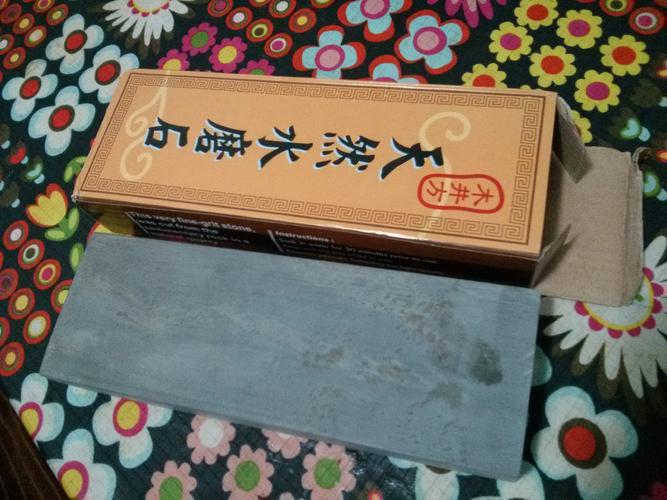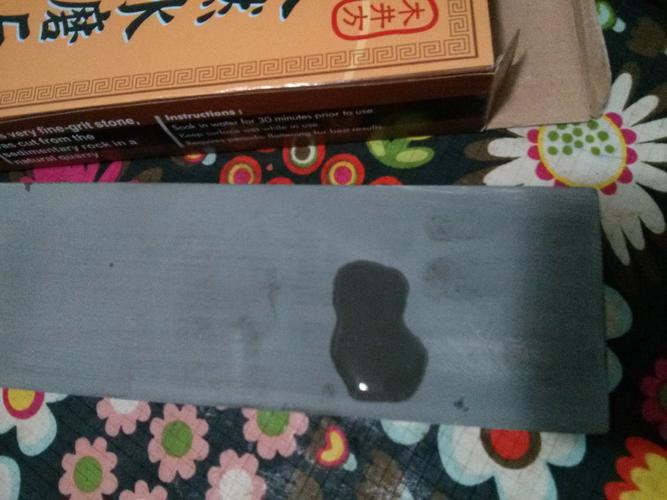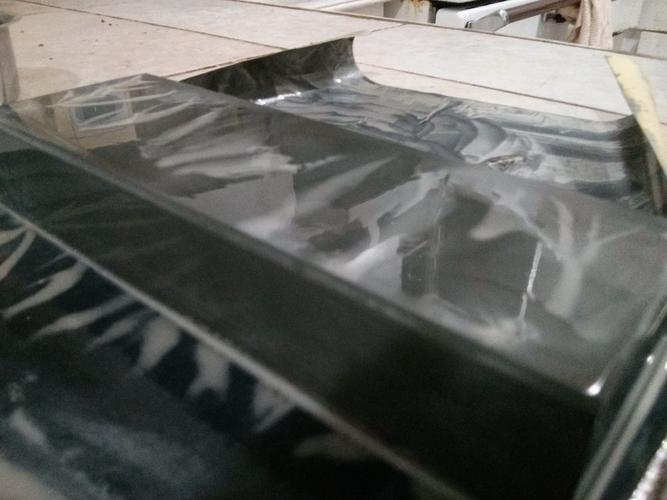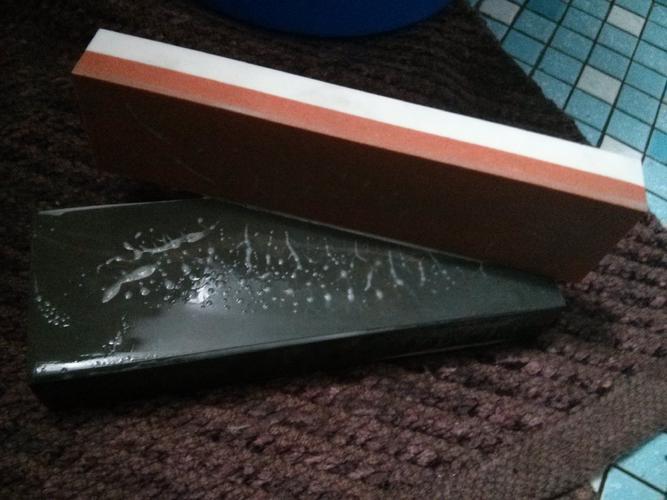Results 21 to 27 of 27
Thread: My CNAT Lapping Journey
Threaded View
-
05-23-2017, 06:11 PM #1Senior Member

- Join Date
- Mar 2017
- Location
- Calgary, Alberta, Canada
- Posts
- 321
Thanked: 41 My CNAT Lapping Journey
My CNAT Lapping Journey
So I finally got my hands on that CNAT. In a decent shape, but there are a few saw marks left on each side.

And oh boy does this thing not soak water!

Using the roughest wet or dry sandpaper I could get (400), I got to work. This thing takes forever to lap!


Obviously, I couldn't let all that nice slurry go to waste, so I tried sharpening two knives. The first one was already sharp (with my trusty Lansky 1000 ceramic hone) and the polishing from this hone made it a bit better. My wife was happy about that.
I also tried sharpening another knife 'from scratch', and the resulting edge is nothing to write home about - so that goes along the lines of what we know about those hones.
So, at the end of the day, I had a smooth sandpaper and my hone still had rough spots on <5% of its surface.
Score: CNAT: 1, Me: 0
On day 2, I tried a different strategy: a 120/320 hone that is almost the same size.

On the plus side, the rough spots are almost all gone and it worked faster. On the minus side, I got some extra scratches on the hone.
Score: CNAT: 2, Me: 0
I'm expecting that stone will be done lapping on its next encounter with the sandpaper.
In other observations: the stone dries fast, even after 30 minutes soaking. And its mud doesn't dissolve in water easily. In fact, I could dip the hone with some mud on it and most of that mud will be left on the hone. And the bucket that hosted the hone and its watered down mud still has marks that don't leave with a brushing and some soap.


 17Likes
17Likes LinkBack URL
LinkBack URL About LinkBacks
About LinkBacks






 Reply With Quote
Reply With Quote